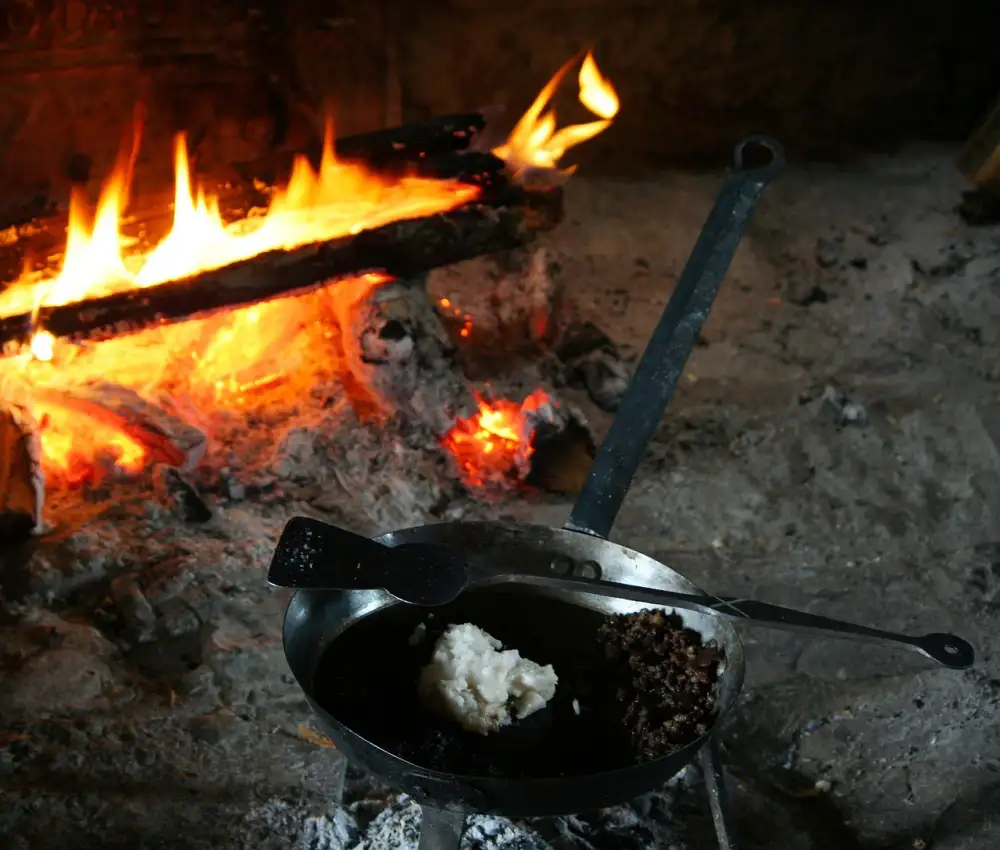Mastering the Art of Cleaning a Cast Iron Skillet: Your Guide to Restoring and Maintaining Kitchen Brilliance

A cast iron skillet is a versatile and beloved tool in any kitchen. Its ability to distribute heat evenly makes it perfect for searing, frying, and baking. However, proper cleaning and maintenance are essential to ensure its longevity and performance. In this guide, we will take you through the step-by-step process of cleaning a cast iron skillet, from gathering the necessary supplies to storing it properly. By mastering the art of cleaning your cast iron skillet, you can maintain its brilliance and enjoy delicious meals for years to come.
Gather the Necessary Supplies
To effectively clean a cast iron skillet, it is important to gather the necessary supplies beforehand. Here are the items you will need:
1. Scrub brush or sponge: Look for a brush or sponge specifically designed for cleaning cast iron. Avoid using abrasive materials that can damage the skillet's seasoning.
2. Mild dish soap: Choose a gentle dish soap that won't strip away the skillet's seasoning. Avoid using harsh chemicals or detergents.
3. Hot water: You will need hot water to rinse off any residue from the skillet. Make sure the water is not boiling, as extreme temperature changes can cause the skillet to warp.
4. Coarse salt: Coarse salt acts as a natural abrasive and helps remove stubborn food particles without damaging the skillet's surface.
5. Paper towels or clean cloth: These will be used for drying the skillet after cleaning.
6. Cooking oil or shortening: To season and maintain your cast iron skillet, you will need a cooking oil with a high smoke point such as vegetable oil, canola oil, or flaxseed oil. Alternatively, you can use solid shortening like lard or vegetable shortening.
By having these supplies ready, you'll be well-prepared to tackle any cleaning challenges and ensure your cast iron skillet remains in top-notch condition for years to come.
Preparing the Skillet for Cleaning
Before you begin cleaning your cast iron skillet, it's important to prepare it properly. Start by allowing the skillet to cool completely after use. Never attempt to clean a hot skillet as this can cause burns.
Once cooled, use a stiff brush or scraper to remove any food particles or residue from the surface of the skillet. Be gentle but thorough in your scrubbing, making sure to reach all corners and crevices.
Next, rinse the skillet under warm water to remove any remaining debris. Avoid using soap at this stage, as it can strip away the skillet's seasoning. Instead, rely on the power of water and elbow grease to get rid of any stubborn bits.
If there are still stubborn stains or residue present, you can create a paste by mixing equal parts coarse salt and vegetable oil. Apply this mixture to the affected areas and scrub gently with a cloth or sponge.
After you've finished scrubbing, rinse the skillet again under warm water to remove any traces of salt or oil. Make sure all residue is gone before proceeding to dry and season your cast iron skillet.
Cleaning the Skillet
To begin cleaning your cast iron skillet, start by rinsing it under hot water. Avoid using soap as it can strip away the skillet's seasoning. Gently scrub the surface with a stiff brush or sponge to remove any food particles or residue. For stubborn bits, you can use a small amount of coarse salt as an abrasive. Once clean, rinse the skillet thoroughly to remove any remaining salt or debris. Make sure to dry the skillet completely to prevent rusting.
Removing Stubborn Stains or Residue
Sometimes, even after cleaning your cast iron skillet, there may be stubborn stains or residue that refuse to budge. Don't worry, there are a few methods you can try to get rid of them.
One effective method is to use a paste made from equal parts baking soda and water. Apply the paste to the stained areas and gently scrub with a non-abrasive sponge or brush. Rinse thoroughly and dry the skillet.
If the stains persist, you can try using coarse salt as an abrasive. Sprinkle a generous amount of salt onto the stained areas and scrub with a damp cloth or sponge. The salt will help lift off the stubborn residue without damaging the skillet's seasoning.
For particularly tough stains, you can also try boiling water in the skillet. Fill it with water and bring it to a boil on the stovetop. Let it simmer for a few minutes before carefully pouring out the hot water. Use a sponge or brush to scrub away any loosened residue.
Remember, never use harsh chemicals or steel wool on your cast iron skillet as they can strip away its seasoning and damage its surface. Stick to gentle methods like baking soda, salt, and hot water for best results.
By following these tips, you'll be able to remove stubborn stains or residue from your cast iron skillet and restore its brilliance for many more delicious meals to come.
Drying and Seasoning the Skillet
After cleaning your cast iron skillet, it is crucial to dry it thoroughly to prevent any moisture from causing rust. Start by using a clean towel or paper towels to remove any excess water from the surface of the skillet. Next, place the skillet on a stovetop burner set to low heat for a few minutes to evaporate any remaining moisture.
Once the skillet is completely dry, it's time to season it. Seasoning helps create a natural non-stick surface and enhances the flavor of your food. To season the skillet, apply a thin layer of cooking oil or shortening all over its surface, including the handle. Use a paper towel to spread the oil evenly and make sure there are no pools or drips.
Place the skillet upside down in an oven preheated to 350°F (175°C). This allows any excess oil to drip off and prevents pooling. Let it bake for about one hour, then turn off the oven and let the skillet cool inside. The heat will bond the oil molecules with the iron, forming a protective layer.
Remember that seasoning is an ongoing process that improves over time with regular use and proper care. Each time you cook with your cast iron skillet, you contribute to its seasoning and enhance its performance.
By drying and seasoning your cast iron skillet properly, you ensure its longevity and maintain its quality for years to come.
Storing the Skillet Properly
Once you have cleaned and seasoned your cast iron skillet, it's important to store it properly to maintain its quality. Here are some tips for storing your skillet:
1. Make sure the skillet is completely dry before storing it. Any moisture left on the surface can lead to rusting.
2. Avoid stacking other heavy cookware on top of the skillet, as this can cause damage or create pressure points that may affect its shape.
3. Place a paper towel or cloth inside the skillet to absorb any excess moisture and prevent dust from settling on the surface.
4. Store the skillet in a cool, dry place away from direct sunlight and humidity. A kitchen cabinet or pantry works well.
5. If you have multiple cast iron skillets, consider placing a layer of paper towels or cloth between each one to prevent scratching or chipping.
By following these simple steps, you can ensure that your cast iron skillet stays in excellent condition and ready for use whenever you need it next. Proper storage will help preserve its seasoning and extend its lifespan, allowing you to continue mastering the art of cooking with this versatile kitchen tool.
In conclusion, maintaining the quality of your cast iron skillet is essential for its longevity and performance in the kitchen. By following the proper cleaning and seasoning techniques, you can ensure that your skillet remains in excellent condition for years to come. Remember to always dry your skillet thoroughly after each use and apply a thin layer of oil to prevent rusting. Store it in a cool, dry place to avoid moisture damage. With regular care and attention, your cast iron skillet will continue to be a valuable tool in mastering the art of cooking delicious meals.
Published: 06. 01. 2024
Category: Home



